comment [8]
- From trax on 13-01-2012 at 15:56:44
Klikni na crveno DOWNLOAD dugme, eto ga iznad.
IP: n/a
The idea is to use separate shift register for each 7-segment display. Serial output from the first register can be connected to input of second one, and so on. The next thing would be to fill them with serial data to display the numbers.
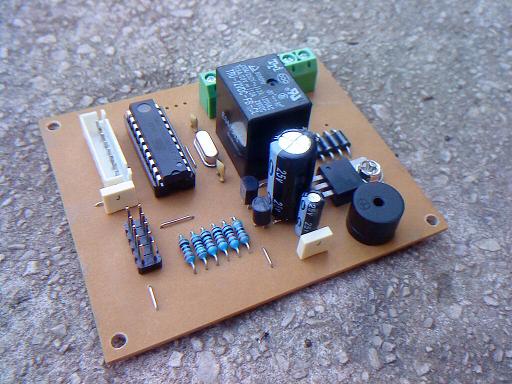
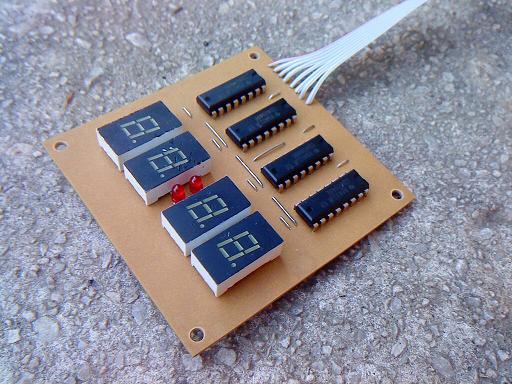
The advantage of this approach is that it is not required to refresh segments all the time, you actually fill the data into the registers and that's it. This results in display begin very bright, flicker-effect is eliminated and microcontroller resources are available for other more important work. Aside from that, only two data lines are required to control this display, which is very useful if we don't have enough I/O pins. The down-side with this approach is that segments draw more current than in multiplexed version.
On the schematics you can also see the piezo buzzer, voltage stabilizer (220V -> 5V) and relay.
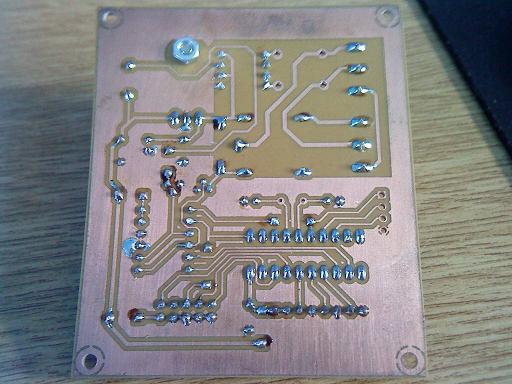
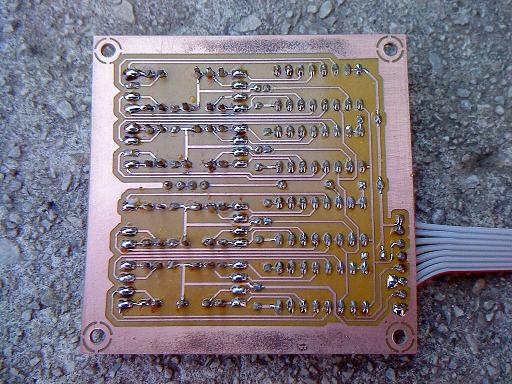
Segments are connected kind of strange and that's because PCB is simpler this way. You can connect segments any way you like, but the "segments table" in the source code should be modified accordingly.
Code is written in Bascom AVR, which suits me best because of it's simplicity where I used the "flag" system. There is source code, hex and Eagle project files available for download by clicking on the red download button below.
Device operation:
-two buttons are used to set the countdown time in 10 seconds step
-the third button is for counter start/stop
-timer counts to zero and at the end it turns off the timer, and beeps on the piezzo buzzer
-the first two buttons are disabled during countdown procedure
-previous set time is saved in EEPROM so it is required to set the time only once. EEPROM will save the settings after power-down and upon power-up it will display previously saved time
-microcontroller will go to sleep after two minutes of no activity, and the current consumption is reduced to less than 5mA
-by pressing on start/stop button, it will wake up
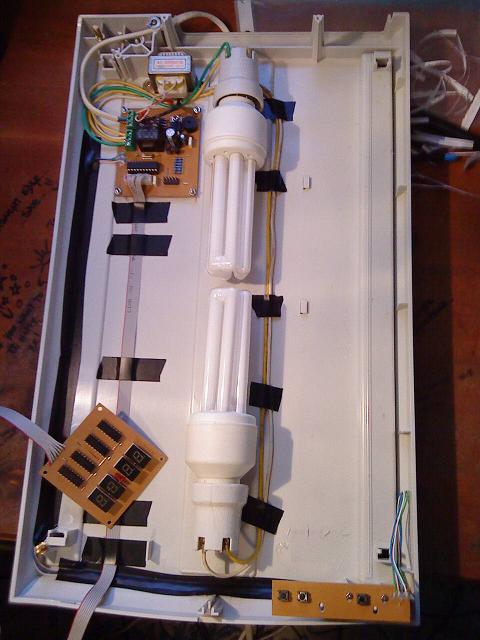
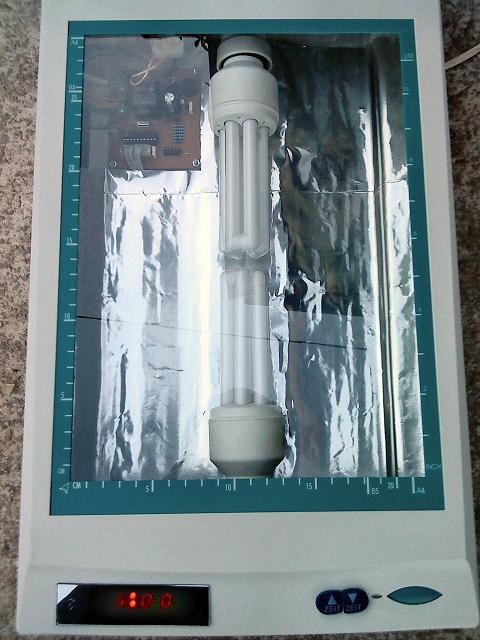
Author (sent by): Kizo
Download counter: 4,880
Rating: 

 (2.93, votes 3193)
(2.93, votes 3193)
Date: 06-11-2009
Lokalna verzija ove stranice: Timer za foto-postupak
trax hvala samo sto ja sa tom shemom i svojim znanjem malo teze to mogu da izvedem treba mi
malo detaljnija shema nekom da dam da mi uradi stampu kupim delove to polemim i pustim u rad
ako imas bolju ideju kazi ili da mi prodas stampu ili kit treba mi tajmer za osvetljavanje
klisea za tampon stampu sa uv lampama i to tajmer sa displejom regulacije do 10 minuta tacnosti
od 1 sec i sa mogucnoscu podsavanja vremena mislim da je ovaj dobar ako bi nasao da kupim sve
elemente u beogradu a mislim da bi . Hvala
IP: n/a
Klikni na crveno DOWNLOAD dugme, eto ga iznad.
IP: n/a
molim da mi neko prosledi shemu tajmera za foto postupak sa displejom ako je moguce
IP: n/a
Great... I also use these tubes, and timer is on my phone :-)
IP: n/a
i found similar uv box project, there are using tubes
http://www.qubbeks.puslapiai.lt/articles.php?article_id=25
IP: 88.119.145.250
I have by mistake type in mega8 datasheet, instead of tiny2313, but still 128 prescaler does
not exist for AVR family. Only for timer2 in megas.
IP: n/a
s is is not a clock.
2)better result could be achieved with 4 bulbs, but even with 2 uniformity of light is good
enough to illuminate even bigger pcb's. There are some pictures of this on forum so u might
check it out.
If you have any more questions regarding this project feel free to ask.
Best regards,
Kizo
IP: n/a
Hello
First i got to say that im glad that my project have such a big interest.
Regarding your questions:
1)im aware of that 10us error every half a second, and you are right that with this settings
error would be zero. But you overcome one small detail. 128 prescaler value for timer1 does not
exist. 1, 8, 64, 256 and 1024 are only valid ones (check the atmega8 datasheet)! Alternative is
to use 64 or lower, but then u cant achieve 0.5s ISR.
I don't see reason why this 10us is souch a problem, since thi
IP: n/a
Hi,
1) had a quick look at your source code. The timer is configured wrong. Like it is, it gives a
10µsec error on each interrupt. Rather use prescaler=128 and 46874 as compare
2) Do you get bigger pcb's even enough with only 2 bulbs?
IP: 195.82.37.40
You can log-in on forum link: Login page. After logging-in, return to this page and click refresh in your browser.